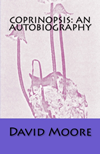Coprinopsis: an autobiography
This is my story. It is, fundamentally, an autobiographical account of my research career. It has also turned out to be a biography of the ink cap mushroom which is now called Coprinopsis cinerea, so to put my own research into some perspective I do make reference to the work of others; however, as I say, this is my story so don't be surprised if my opinions dominate the line of argument I present.
I do not intend beginning with a remorseless account of a childhood spent in Liverpool’s Toxteth district. Suffice to say that even in that deprived area there was a family friend and neighbour whose interest in fine engineering was expressed in a collection of gleaming brass microscopes. The wonders they revealed to me in drops of pond water and in diatoms were enough to drive me, even as a young boy in the mid-1950s, towards biology. The sculpturing on diatom valves was regularly used in club competitions designed to test the resolution of dry, water- and oil-immersion objectives. Can you think of a more arcane activity for what, for the most part, were off-duty marine engineers? Or, for that matter, a better way for a microscopical neophyte to be introduced to the relation between magnification and resolution and ways of getting the best performance out of light microscopes and other optical devices? A lifetime of thanks to the memory of Jack Bailey is probably not enough.
My research eventually came to focus on the nature and process of developmental biology in mushroom fungi. But this is not how I started. Although I came to appreciate that morphogenesis is not simply a matter of the cellular system playing out a predefined genetic programme and that the key to understanding fungal developmental biology is to accept the extent to which the expression of morphogenesis is dependent upon the environment, I began my research career as a classic biochemical geneticist and it is interesting to see how a researcher’s interpretations are likely to be influenced by his or her personal experiences, origins and environment.
This is a long story which is presented in several HTML pages, so use the navigation panel on the left, the control buttons at top-right and bottom-right of the page, and the hyperlinks embedded in the text to find your way around it. ALTERNATIVELYYou can get the story in e-book form from Amazon My autobiographical account of my 50-year research career
|
IMPORTANT TECHNICAL POINT If you click on one of my reference hyperlinks in the text of this website (or the PDF version referred to in the previous panel) a reprint of the cited publication will be downloaded to your monitor (which you could then save to your own reprint collection). For copyright reasons I can't do this with papers written by other people, but in the reference list I give you hyperlinks to the DOIs (Digital Object Identifier, which uniquely identifies where an electronic document can be found on the Internet and remains fixed) for the vast majority of these so you can access the original publication directly. NOTE: this website attempts to download each of these reprint PDFs into a new window. These count as 'pop-ups' to your web browser, so for this system to work to your convenience you must have your browser set to accept pop-ups from this website. |
I suppose, though, that it is the Ph. D. project which is the more realistic analogue of a scientific ‘childhood’. My Ph. D. research dealt with the biochemical genetics of Coprinus cinereus (then called Coprinus lagopus, now called Coprinopsis cinerea, see text box below for explanation) and I can readily appreciate how that training still influences the way in which I interpret information. This research was done in the mid-1960s, in the days of biochemical markers and auxotrophic mutants, and was a study of Mendelian ‘formal’ genetics, aimed at extending the chromosomal linkage map. Consequently, the work was highly numerate and involved extensive intercrossing, progeny counting, linkage calculations and data interpretation (Moore, 1967a).
I have always been an experimentalist, and it seems to me that performing experiments on an organism and then interpreting their results is a close analogue of a ghost writer interviewing the subject of his/her biography, and then writing the text using the subject’s own words and calling it an autobiography. Throughout this account I will be showing you the results of a great many of my experiments and interpreting them to show you what they mean and how they contributed to a developing story. In many respects I will be using my subject’s own words to tell this story of a life. That is my justification for calling this an autobiography. [TOP]
Identity of the subject: Coprinus, Coprinopsis?Many species of Coprinus have been studied over the years but by far the most use has been made of a set of interfertile strains for which the results have been published, in different parts of the world and at different times, under three different species names: Coprinus lagopus, C. macrorhizus and C. cinereus. The nomenclature of this group (known collectively as ‘C. lagopus and its allies’) had already become confused when I started my research in the 1960s. A thorough investigation of this confusion by Pinto-Lopes & Almeida (1970) revealed a wide variety of specific names that had been used to designate particular species, and conversely, they found that a large number of different species had been described with the same (usually erroneous) specific epithets. They suggested that strains called Coprinus lagopus in Europe and North America, and those called C. macrorhizus in Japan had all been wrongly identified and should be described as C. cinereus (I’ve emphasised here that this is a problem in the original identification of strains collected from nature). Given that the initial confusion was a matter of misidentification by the people who originally isolated the cultures, it is important to appreciate the natural origins of the cultures that have been used in so much research over the past 60 years. The European strains originated with collections made by Dan Lewis and Peter Day in the vicinity of the Bayfordbury (Hertfordshire, UK) laboratory of the John Innes Institute. Among these collections were the ‘Helm’ series of wild-types isolated by Day in 1957 (details in Day & Anderson, 1961); these included strains called H1, H2, H5 and H9. All were isolated as single spore colonies from basidiospores harvested from fruit bodies collected in the wild and were therefore wild type monokaryons of specific mating type. These isolates of Coprinus (whatever their correct species name) all have two mating type genes (A and B) which have multiple alleles which are assigned allele numbers on the basis of mating type tests with pre-assigned testers. H1 was assigned the mating type A5B5, and H9 the mating type A6B6. The H2 (A6B5) and H5 (A5B6) wild types were recombinant mating types. The A and B mating type genes are located on different chromosomes so they segregate randomly during meiosis; two monokaryons are able to form a dikaryon (that is, they are compatible) when grown so that their hyphae mix together (this sort of cultivation being called a confrontation) only if they have different A factors and different B factors. The monokaryon BC9/6,6, which I adopted as my standard laboratory wild type, is one of a set of four laboratory prototrophs prepared by D. H. Morgan (my PhD supervisor) by a series of crosses in which H1 was backcrossed for nine generations to it sib, H9. The Hertfordshire population of this organism, represented by the strains isolated from nature by Lewis and Day (Day & Anderson, 1961), were widely distributed to laboratories in Europe and North America (initially under the name ‘C. lagopus sensu Buller’) for use in a range of genetical investigations (specific examples and references are discussed in Moore, Elhiti & Butler, 1979). These isolates were identified as more correctly belonging to Coprinus cinereus by Pinto-Lopes & Almeida (1970). Across the same span of time (that is, since the 1950s) workers in Japan have studied an organism that they initially identified as Coprinus macrorhizus forma microsporus. Pinto-Lopes & Almeida (1970), although they were unable to obtain cultures of this collection and so could not include it in the mating tests on which the bulk of their conclusions were based, stated that these isolates should also be described as Coprinus cinereus (maintaining the description ‘forma microsporus’ if appropriate). My contribution to this discussion was to obtain the Japanese collection, and a range of isolates from other geographical areas, and complete these mating tests to establish firmly the extent of their interfertility (Moore, Elhiti & Butler, 1979). Among the strains tested were a monokaryon wild type (code number ZBw601/40,40) that I derived from a dikaryon supplied by Dr J. Nečásek of the Karlovy University, Prague, Czechoslovakia; a strain (code number PA1) collected in Poland by Peter Day; and other wild type monokaryons I prepared from the Coprinus cinereus dikaryon isolated by Chang-Ho & Yee (1977) as a weed in Volvariella mushroom beds in Singapore. I cultivated seven single spore monokaryons from this material and used the strain coded Singapore-7 in the fertility tests. Drs T. Kamada and T. Takemaru of the Department of Biology of Okayama University provided me with a spore print from a fruit body formed by the dikaryon [5026+5132] which they had adopted as the wild type for their studies of the genetics of fruit body morphogenesis (for example Kamada, Kurita & Takemaru, 1978). I made single spore isolations from this material and obtained seven strains (coded Okayama-1 to Okayama-7) which were all monokaryons (free of clamp connections but producing oidia) though, as the dikaryon was heterozygous for a morphological mutant, they varied in hyphal growth pattern. All seven of the Okayama monokaryons I isolated produced microsclerotia in culture, a feature unique to Coprinus cinereus according to Kemp (1975); and all proved to be fertile with H1, ZBw601/40,40, PA1, Singapore-7 and MC-1,3 (a monokaryon supplied by P. R. Day which was collected at Mount Carmel, Hamden, Connecticut, USA), and with the monokaryon BC9/6,6. By fertile I mean that confrontations between monokaryons on synthetic medium rapidly yielded dikaryotic mycelia and that these dikaryons went on to produce fertile fruit bodies when appropriately cultivated. There is no doubt, therefore, that all of these strains, despite their world-wide geographical origin, are members of the same inter-breeding population and therefore belong to the same species. However, the basidiospores originating from the [5026+5132] dikaryon measured 9.3 × 5.7 µm and were not significantly smaller than those produced by fruit bodies of our [BC9/6,6+H1] dikaryon which measured 9.6 × 6.3 µm. Thus although the material from Okayama can be placed in the species C. cinereus as suggested by Pinto-Lopes & Almeida (1970), the qualification ‘forma microsporus’ is not appropriate. I accepted the recommendation of Pinto-Lopes & Almeida (1970) with regard to nomenclature and concluded that all the cultures and isolates referred to above share membership of the taxon Coprinus cinereus (Schaeff. ex. Fr) S. F. Gray sensu Konr. A dikaryon constructed from the monokaryons BC9/6, 6 and H1 was used extensively in my laboratory for the production of fruit bodies for experiments on morphogenesis. From the mid 1980s I frequently used a strongly-fruiting wild type dikaryon (called Meathop), which was originally isolated, by R.A. Johnson, from a compost heap at Lower Meathop Hill (near Grange-over-Sands) in Cumbria, UK. The monokaryon that I isolated from Kamada and Takemaru’s [5026+5132] spore print and designated ‘Okayama 7’ was the strain used for the C. cinereus genome sequencing project as part of the Broad Institute's Fungal Genome Initiative [http://www.broadinstitute.org/annotation/genome/coprinus_cinereus/MultiHome.html]. As emphasised above, incorrect identifications of field-collected samples were at the root of the original confusions. By the end of the 1970s these errors were corrected and there was general acceptance of the view that Coprinus cinereus was the correct name. This began to change in the mid-1990s when molecular phylogenetic research on the genus Coprinus began to reveal that a much more fundamental error afflicted what was then understood as the genus Coprinus; indeed, in their monographic paper Redhead et al. (2001) stated ‘the current classification is grossly incorrect’. This opinion started to crystallise with the observation that restriction fragment length polymorphisms (RFLPs) surprisingly showed that the type species of the genus Coprinus, the well-known Lawyer’s Wig Coprinus comatus, was not monophyletic with what were then thought to be other Coprinus species. Indeed, more than 90% of what had to that time been considered ‘other Coprinus species’ were not even in the same family as Coprinus comatus. The full story is told by Redhead et al. (2001) and I do not intend to repeat it here. Suffice to say that although:
these authors recognised four genera for coprinoid taxa: the genus Coprinus itself in family Agaricaceae (the family name Coprinaceae being reduced to synonymy with Agaricaceae), and three other genera in the new family, Psathyrellaceae, Coprinopsis: into which are placed common species such as Coprinus lagopus (=Coprinopsis lagopus), Coprinus cinereus (=Coprinopsis cinerea), Coprinus atramentarius (= Coprinopsis atramentaria), Coprinus radiatus (= Coprinopsis radiata) and Coprinus kimurae (= Coprinopsis kimurae); Parasola: to include Coprinus plicatilis (=Parasola plicatilis), Coprinus miser (= Parasola miser) and Coprinus setulosus (=Parasola setulosa); Coprinellus: which includes Coprinus micaceus (= Coprinellus micaceus), Coprinus disseminatus (= Coprinellus disseminatus), and Coprinus bisporus (=Coprinellus bisporus). The bottom line to all this, as far as I am concerned, is that 'my organism', Coprinus cinereus, was one of many species of this ‘grossly incorrect’ genus that was assigned a different generic name, becoming Coprinopsis cinerea. Most of the cultures described in this text box are still available from the American Type Culture Collection at http://www.lgcstandards-atcc.org/Home/tabid/477/Default.aspx [choose 'Fungi and Yeasts' from the Search catalogue drop-down menu at top right and then enter Coprinus cinereus into the search line]. |
[TOP]
Updated December 2016


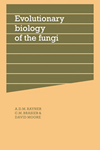
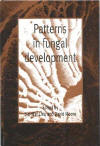
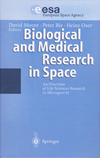
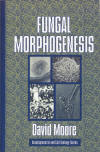

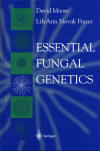
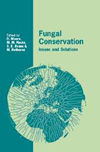
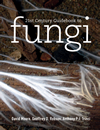
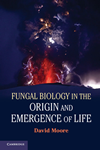
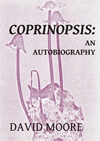 or
or 